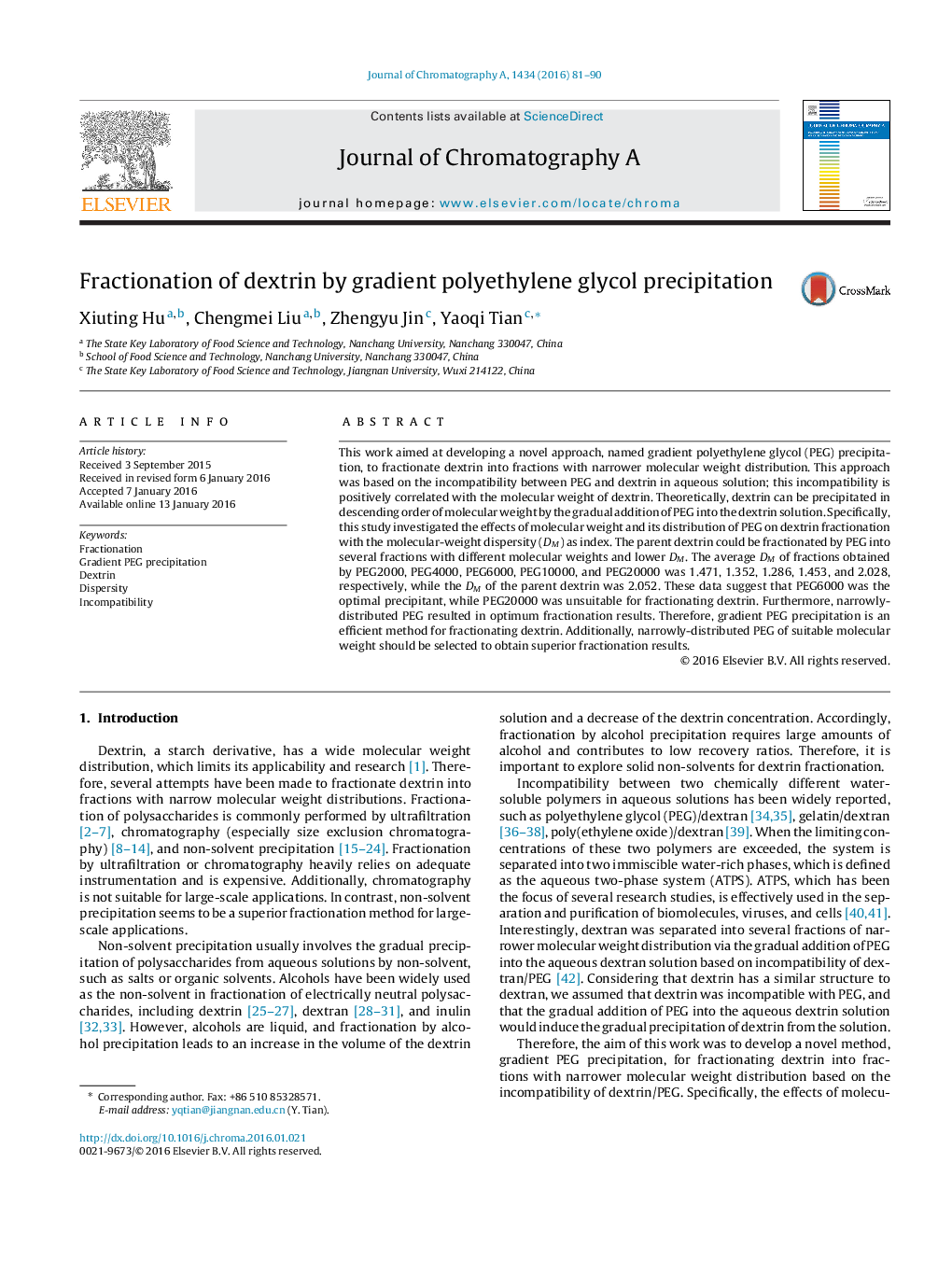| Article ID | Journal | Published Year | Pages | File Type |
|---|---|---|---|---|
| 1198973 | Journal of Chromatography A | 2016 | 10 Pages |
Abstract
This work aimed at developing a novel approach, named gradient polyethylene glycol (PEG) precipitation, to fractionate dextrin into fractions with narrower molecular weight distribution. This approach was based on the incompatibility between PEG and dextrin in aqueous solution; this incompatibility is positively correlated with the molecular weight of dextrin. Theoretically, dextrin can be precipitated in descending order of molecular weight by the gradual addition of PEG into the dextrin solution. Specifically, this study investigated the effects of molecular weight and its distribution of PEG on dextrin fractionation with the molecular-weight dispersity (DM) as index. The parent dextrin could be fractionated by PEG into several fractions with different molecular weights and lower DM. The average DM of fractions obtained by PEG2000, PEG4000, PEG6000, PEG10000, and PEG20000 was 1.471, 1.352, 1.286, 1.453, and 2.028, respectively, while the DM of the parent dextrin was 2.052. These data suggest that PEG6000 was the optimal precipitant, while PEG20000 was unsuitable for fractionating dextrin. Furthermore, narrowly-distributed PEG resulted in optimum fractionation results. Therefore, gradient PEG precipitation is an efficient method for fractionating dextrin. Additionally, narrowly-distributed PEG of suitable molecular weight should be selected to obtain superior fractionation results.
Related Topics
Physical Sciences and Engineering
Chemistry
Analytical Chemistry
Authors
Xiuting Hu, Chengmei Liu, Zhengyu Jin, Yaoqi Tian,
